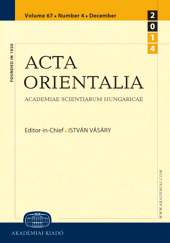Some observations on the migration of apocalyptic features in Muslim tradition
Some observations on the migration of apocalyptic features in Muslim tradition
Author(s): Ofer Livne-KafriSubject(s): Islam studies
Published by: Akadémiai Kiadó
Keywords: Islam; Muslim apocalypses; apocalyptic literature; Muslim tradition; ḥadīth;
Summary/Abstract: The most basic eschatological conceptions of Islam are found already in the Qur’ān. The expansion of the Qur’ānic picture in the ḥadīth includes new materials and conceptions and it reflects various religious, social and political processes in Muslim society in the first centuries to the hijra . This article offers explanations for some matters that seem to represent the migration of apocalyptic issues from non-Muslim sources into the ḥadīth . It seems that the interpretation of Muslim apocalyptic traditions often requires a search of the parallel Jewish and Christian literatures, and the issues chosen here might serve as a methodological model to demonstrate this. We see here (as in other studies) that the Muslim apocalyptic traditions and the Jewish and Christian apocalypses evince similarity in basic ideas, perceptions, attitudes, terminology, structures, and other features of the genre; still, the Arabic traditions already reflect the Islamic system of values; they were created against the background of social, religious and political settings of early Muslim society. This also attests to a certain similar cultural background of Jews, Christians and Muslims, to similar responses and interpretations they gave (in form and content) to their fears, agonies and hopes, in time of crisis, political disorder, military confrontations or civil wars.
Journal: Acta Orientalia Academiae Scientiarum Hungaricae
- Issue Year: 60/2007
- Issue No: 4
- Page Range: 467-477
- Page Count: 11
- Language: English
- Content File-PDF

